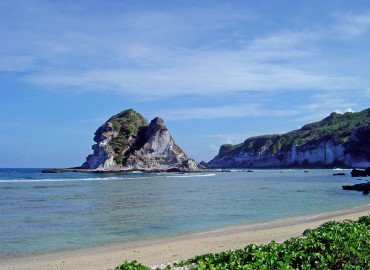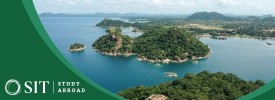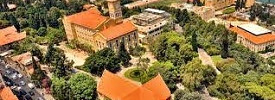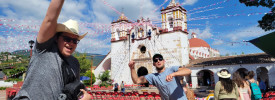Wildlands Studies: Pacific Islands: Fragile Island Ecosystems
- Location(s): United States
- Program Type(s): Study Abroad
Wildlands Studies
Wildlands Studies: The Thailand Project: Marine And Coastal Ecology Of The Indo-Pacific
Join us this winter in the Pacific Islands to explore the amazing terrestrial and marine ecosystems on the Mariana Islands of Guam, Rota and Saipan. Situated over 1,000 miles away from any major land mass, the remote Mariana Island archipelago si... read more
All Reviews
This program is lonely. If you went on this program leave a review!
About
Join us this winter in the Pacific Islands to explore the amazing terrestrial and marine ecosystems on the Mariana Islands of Guam, Rota and Saipan. Situated over 1,000 miles away from any major land mass, the remote Mariana Island archipelago sits like a crescent moon in the western Pacific Ocean. These lush, tropical volcanic islands support unique ecosystems where endemic and rare species are abundant. The fringing coral reefs boast an incredible diversity and abundance of marine life, from sharks and turtles to octopi and clown fish. Our three island comparison is the perfect tropical showcase for endemism, species adaptation, climate change and conservation. Guam, the most populated of the islands, is home to a major US military base and one of the world’s most destructive invasive species, the brown tree snake (Boiga irregularis), which has caused the extirpation of almost all native birds. Consequently, Guam is an ecological experiment for conservation and restoration ecology; significant efforts are underway to restore its “silent” forests. On Saipan, a neighboring island to the north of Guam, the forests are alive with emerald skinks, native fruit doves and golden white-eyes. Foreboding cliffs rise above historical war sites, a memory of the islands dark past. Nearby Rota, once a busy hub during the Second World War and a major tourist destination, is now a forgotten dot on the map. A tiny deserted island, with the tallest peak of the Mariana Islands in its center, it is home to only a few thousand inhabitants. Its rich and untouched forests are home to a multitude of endangered flora and fauna such as the Mariana fruit bat, the endemic Mariana crow and the Rota blue damselfly. Turtles and sharks reside in the pristine coral reefs and dolphins and whales inhabit the deeper waters. We will camp and hike our way across these three islands, exploring the marine and terrestrial ecosystems, learning about the local wildlife and ecology using key ecological sampling techniques and field research skills. We will spend time with local community organizations, and learn from the indigenous Chamorro people about their relationship with the land and sea. We will discuss how climate change is predicted to affect these islands and evaluate what strategies are in place to protect their environment. By the end of the program students will have a good understanding of tropical marine biology, the threats marine ecosystems are currently facing, and future restoration and conservation challenges. They will also have a better idea of the vulnerability of island ecosystems to climate change and invasive species and what can be done to mitigate these problems.









